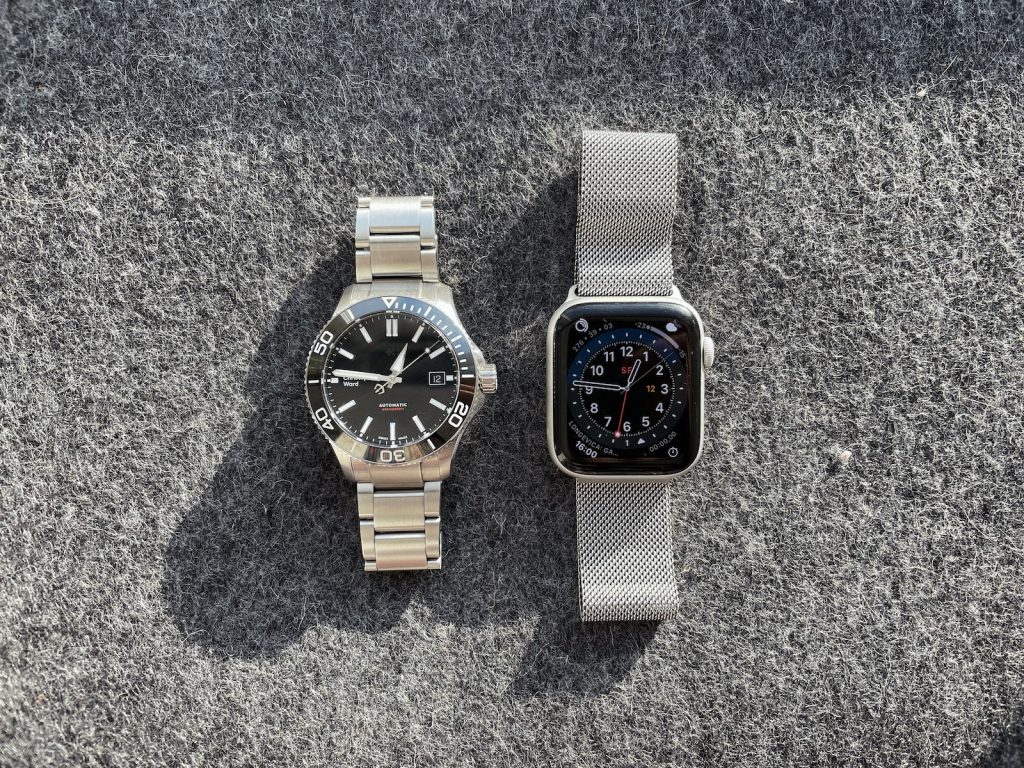In 2025, smartwatches are no longer just digital gadgets on your wrist—they’re mimicking traditional watchmaking in ways that blur the line between virtual experience and mechanical heritage. One of the latest features gaining traction across major smartwatch platforms, particularly the Apple Watch Ultra X and Samsung Galaxy Chrono, is “Mechanical Mode.” These display settings simulate the ticking motion, escapement behavior, and even the spinning tourbillons of luxury timepieces, complete with animated gear trains and virtual bridges. On-screen, it looks like horology. But how close are these digital performances to the real deal?
For purists and seasoned watchmakers, this rising wave of visual simulation is either a parody of craftsmanship or a necessary concession to modern taste. For consumers, it can be both thrilling and deceiving. And underneath the ticking illusion lies an ironic truth—this aesthetic feature often drains more battery than real mechanical power ever could.
Data Face-Off: Apple Watch’s Mechanical Animation vs Real Escapement Precision
To assess the accuracy of 2025’s smartwatch mechanical simulations, we examined Apple’s “Mechanical Face III,” one of the most sophisticated watchface animations ever released. It features a high-frequency escapement visual with visible balance wheel motion, pallet fork engagement, and even simulated Swiss lever noise through haptic feedback. Samsung’s ChronoSkin Pro offers a similar interface, allowing users to select complications like perpetual calendar dials or minute repeater mimicry with animated hammers.
When compared to actual mechanical watch behavior, the following differences emerge:
- Frame Rate vs Real-Time Beat: Apple’s watchface renders movement at 60fps, which creates smooth motion but cannot replicate the real oscillation of a 28,800 vph balance wheel (~8 beats per second). The animation approximates movement with visual fluidity, but lacks true mechanical rhythm and inertia.
- Escapement Behavior: On a real watch, the pallet fork unlocks with each tick, allowing the escape wheel to advance by a precise increment. The simulation, however, simply animates movement with no mechanical interaction—it’s akin to a cinematic loop with no energy transfer.
- Tourbillon Simulation: Tourbillons in smartwatches spin faster and smoother than their mechanical counterparts, which rotate once every 60 seconds by design. This over-speeding is intentional—meant for visual excitement rather than horological fidelity.
- Geartrain Representation: Smartwatch animations show gears spinning visibly on-screen, but often depict incorrect gear ratios or physics-defying sequences. For instance, some watches show multiple wheels rotating in the same direction despite being directly meshed.
While aesthetically impressive, these simulations are not engineered for accuracy. Their purpose is to evoke the beauty of mechanical motion, not replicate its physics. For the average user, it’s enough. But for connoisseurs, it’s a reminder of how surface-level mimicry can never capture the depth of mechanical elegance.
Expert Opinions: Watchmakers Torn Between Outrage and Adaptation
Among traditional watchmakers, reactions to mechanical simulation in smartwatches range from disdain to begrudging acceptance. For many, it represents the commodification of horological language—an appropriation of centuries-old craftsmanship reduced to pixels on glass.
René M., a master watchmaker with 40 years of experience in Geneva, describes the feature as “an insult to the hairspring.” He argues that presenting a simulation as a substitute erodes public understanding of real watchmaking. “A balance wheel isn’t decoration,” he says. “It’s the heartbeat of time itself. What they show is a heartbeat without a soul.”
Others take a more pragmatic view. Isabelle T., an independent watchmaker from Besançon, sees potential in these features as educational tools. “If a young person becomes curious about real watches because of a smartwatch face, I welcome it,” she says. “But only if they learn to respect the difference.”
Interestingly, some luxury brands are now partnering with smartwatch manufacturers to produce officially licensed mechanical-themed watchfaces. Vacheron Constantin, Patek Philippe, and Breguet have so far resisted. But TAG Heuer and IWC have embraced the trend—allowing their dial designs to be digitally adapted, though without actual escapement animation.

The tension lies in the ambiguity. Is this flattery or theft? Preservation or dilution? As the digital continues to imitate the mechanical, the line grows thinner—and the responsibility shifts toward transparency.
Consumer Trap: Why Mechanical Mode Is a Battery Killer
Ironically, the very feature that brings smartwatches closer to the soul of mechanical watchmaking is also the one most detrimental to their performance. In “Mechanical Mode,” smartwatches experience significantly higher battery drain—often reducing a 48-hour charge cycle to just 12–14 hours.
Here’s why:
- Constant Screen Refreshing: To simulate smooth motion, these displays must maintain high frame rates (60–120 fps), forcing continuous screen refreshing that taxes both the GPU and CPU.
- Haptic Feedback Loops: Some animations trigger subtle vibrations to mimic ticking. These micro-engines consume battery constantly, even when the screen is dimmed.
- Sensor Overclocking: To give the illusion of realism, some modes dynamically adjust movement animations based on wrist angle, light conditions, or ambient sound, using gyroscopes and microphones more intensively than standard watchfaces.
- Ambient Display Brightness: Mechanical Mode often increases screen brightness to enhance legibility and “metallic gleam” effects, particularly in sunlit conditions, which further depletes the battery.
- No Energy Storage Efficiency: Unlike a mechanical watch, which stores energy via a mainspring and unwinds slowly over time, a smartwatch has no such reserve. It must generate every second of simulation in real-time.
For users attracted to Mechanical Mode’s visuals, the cost is hidden—not in money, but in power. It is a digital indulgence, aesthetically rich but energetically inefficient. And unlike the traditional timepiece, which can tick for decades with only a service every few years, this version of horology vanishes by dinner unless plugged in.
Conclusion
Mechanical Mode on smartwatches in 2025 is a marvel of design, but not of mechanics. While it offers a visual homage to the ticking beauty of traditional horology, it ultimately operates on illusion, not engineering. The escapement doesn’t tick. The tourbillon doesn’t regulate. The energy transfer is pure animation, not inertia.
To seasoned watchmakers, this feature represents a superficial borrowing of deep craft. To some tech-savvy consumers, it’s a delightful aesthetic enhancement. And to the average user, it’s a drain—both on power and, perhaps, on the appreciation of what makes real mechanical watches so special.
Still, the debate is not about replacing one with the other. It’s about understanding the difference. Mechanical Mode may never rival the soul of a handmade movement, but it could be a gateway—an invitation to learn, to explore, and perhaps one day, to wind up something real.








































